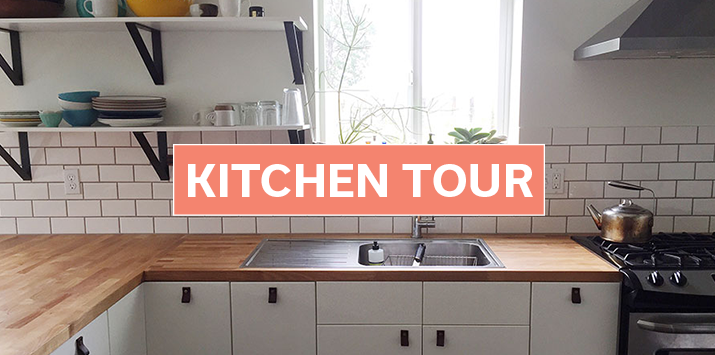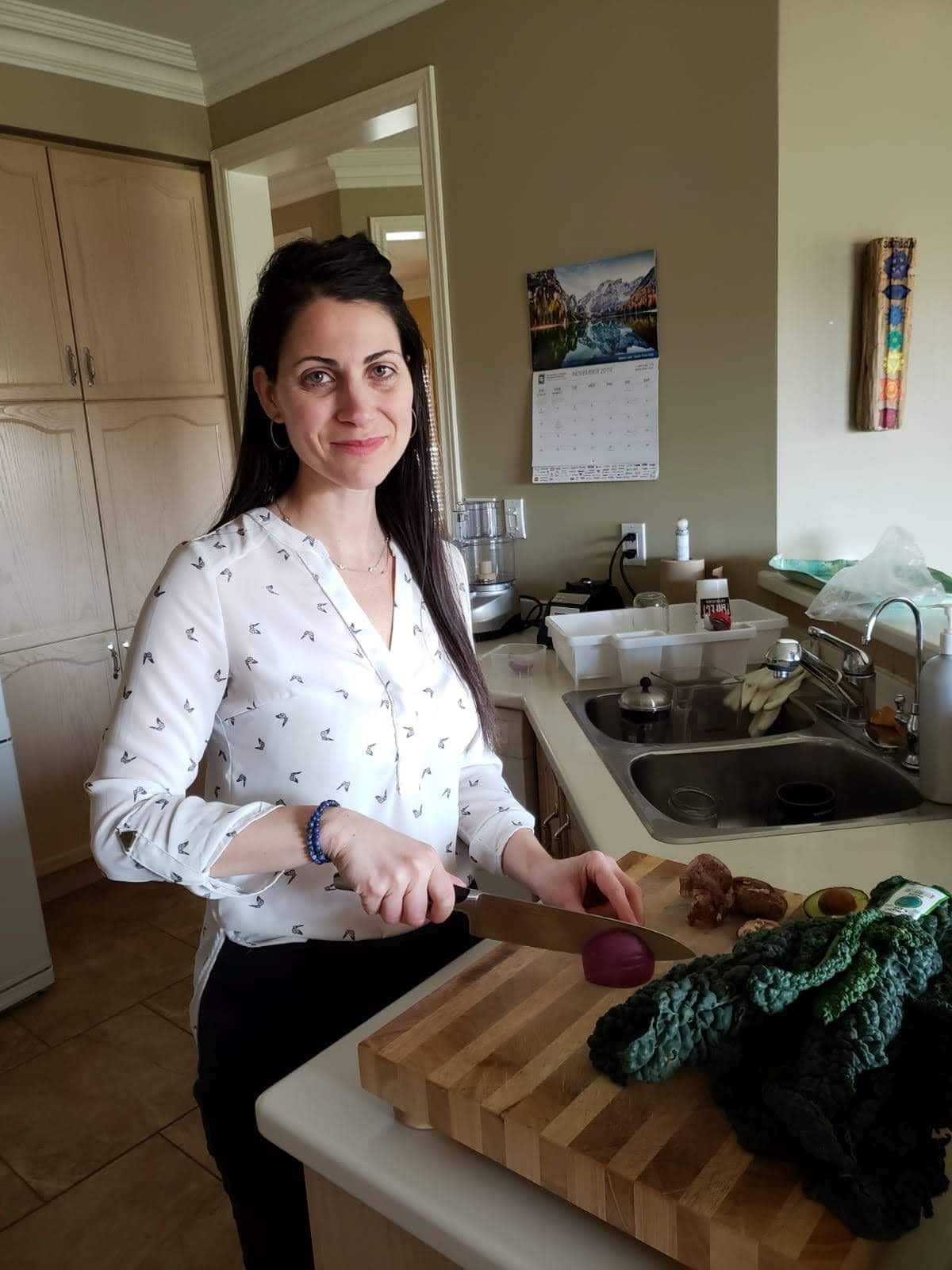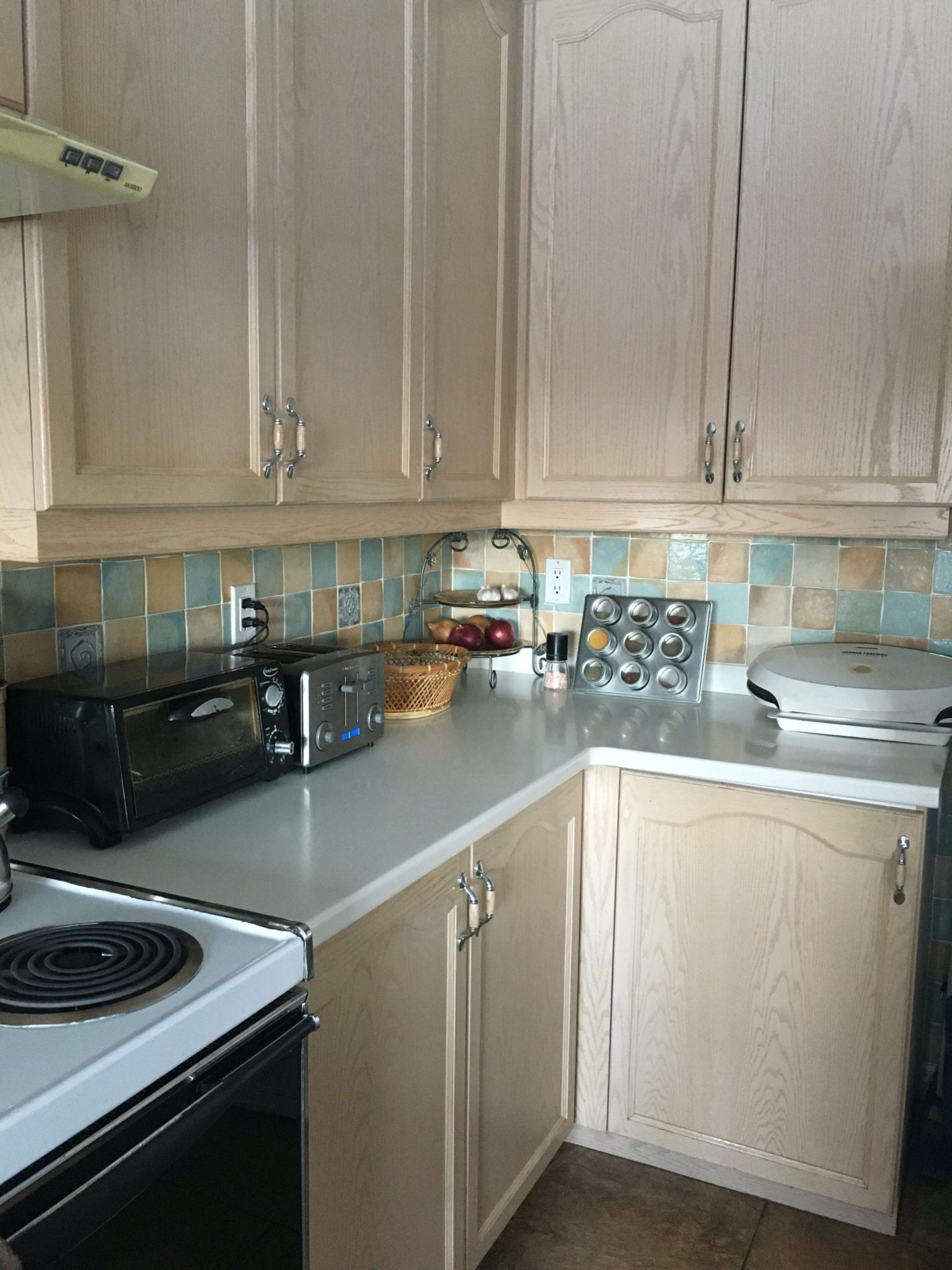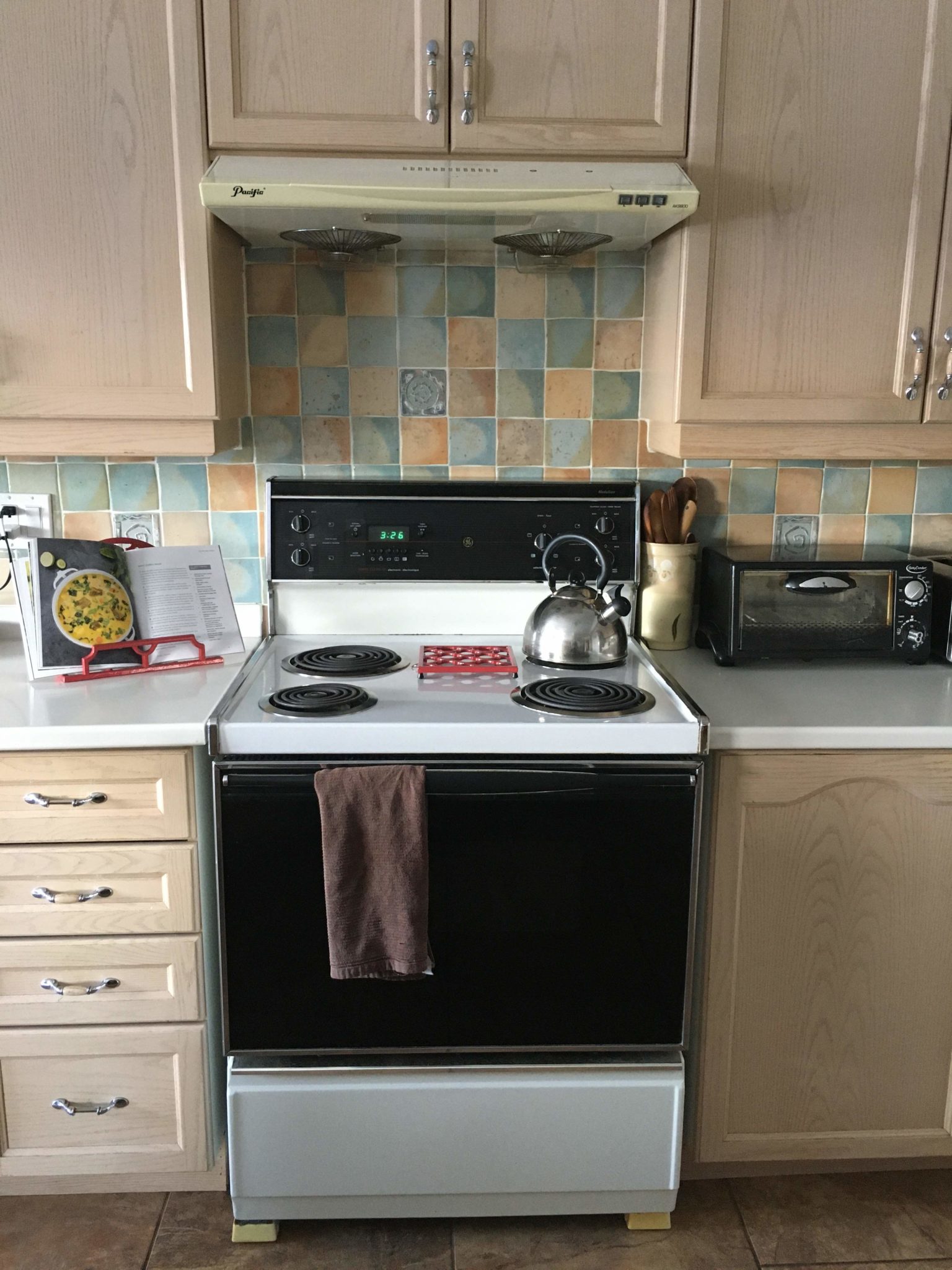That being said, we only promote authors, products, and services that we use ourselves and wholeheartedly stand by. To learn more about how we earn money here on Autoimmune Wellness, head on over to our Promotional Policy.

AIP Kitchen Tour is a monthly feature in which we profile a member of the AIP community and their kitchen setup in hopes that it will further inspire us to get our kitchens organized and set up for success! We’ve interviewed folks who are making the AIP lifestyle a reality in everything from college dorms and small city apartments, to large households with non-AIP family members, and everything in between. Through these interviews, we hope to share how they make it happen across a variety of budgets and living situations, and give the community a wealth of inspiration. Read more Kitchen Tours here!

Name: Doris Romano
Location: Toronto, Canada
AI Disease: Hashimoto’s, autoimmune atrophic gastritis, autoimmune progesterone dermatitis
How long have you been eating AIP? 1.5 years
Have you successfully reintroduced any foods?
Yes! Cacao (yippee!), pastured eggs (weekly), coffee, seed spices, green beans, nuts and seeds in small amounts, tomatoes, white potatoes, white rice, and legumes (occasional).
How has the AIP changed your life?
The AIP diet and lifestyle not only vastly improved my symptoms, but it also taught me how to listen to my body to identify my autoimmune disease triggers and to understand the lifestyle requirements of my own body. It also taught me that diet and lifestyle can’t always fix everything and to accept that there is a time and place for supplements (and medications although I haven’t needed any yet). I learned as well that an essential part of my healing was to dig deeper with self-compassion and other therapies and deal with past trauma that I came to realize was at the root of many of my symptoms.
Size of your AIP kitchen: 12 x 21 feet

Favorite thing about your kitchen:
I have the best knives and sharpener! If you’re on the AIP, you will likely spend a lot of time in the kitchen. Every AIP kitchen needs a good, sharp knife. You will use this the most and it will be worth it!
Least favorite thing about your kitchen:
There is not much I don’t love about my kitchen in terms of space or set up but I would love more natural light and it could use a face-lift but for now, it works just fine for us.
Are there any cheap gadgets or little tools that you have found make AIP easier?
I have enjoyed having a good vegetable peeler on hand as well as an immersion blender to blend soup right in the pot I used to cook it.
What is the biggest thing that changed in your kitchen setup when you adopted the AIP?
I still love to bake for my family, so with their permission, I removed all sources of gluten from the pantry and now make equally delicious paleo treats for them instead. I also stopped using the toaster primarily because I really don’t eat much bread or bagels anymore, but more importantly because that’s where the gluten-filled bread goes. However, I do buy AIP bread from a baker at the market, and I’m the only one who uses the toaster oven if I want to toast it.
If someone was just starting to invest in some useful but more expensive AIP kitchen tools, which one would you tell them to buy first?
I would encourage them to invest in a food processor. It’s more versatile than a blender because it has different attachments and is so useful for cutting down on meal prep time! It’s great for chopping or shredding vegetables, ricing cauliflower, and making dips and liver pate ;).

Are there any tricks you have learned to make AIP work in your space?
I only keep the appliances that I use often on the counters. Also, when I have come home from buying groceries, I do some food prep right away — I wash and cut up certain items and store them in the fridge in glass containers. I also batch cook a couple of times a week because I like variety in my meals — usually one day on the weekend and then one day in the middle of the week.
How do you deal with food for family members that are not AIP?
I made the AIP work in a non-paleo household. My husband and step-sons were very supportive but I also wanted to meet any additional needs they had so alongside an AIP main course or meal, I would have non-AIP condiments, toppings or side dishes for them.
Eventually, I dedicated an area of the pantry to my AIP snacks. Since my kitchen is not 100% gluten-free, we used the following tips to avoid gluten cross-contamination: a separate cutting board for preparing gluten-free food, labels on butter and nut and seed butters to avoid double-dipping, and only gluten-free bread is toasted in the toaster oven.
Are there any tools or appliances that you’ve stopped using now that your diet has changed?
I have reduced my exposure to plastics as much as possible: coffee lids, water bottles, utensils, produce bags and food containers. I have also stopped buying conventional cleaning products for my whole home and started making my own.
What are your favorite meals to batch cook?
I make bone broth once a week and store it in mason jars in the fridge to use in soups or stews, and sometimes even as a warm beverage instead of tea or coffee. I make a soup at least once a week and double the recipe and freeze half of it in double portion servings. I also make a batch of meat patties/burgers (chicken, turkey, beef or bison) and then freeze them for during the week. When the weather is warmer and I am likely to eat more raw salads, I prepare a batch of pesto and salad dressing to use throughout the week.

What are your favorite AIP and Paleo cookbooks?
The Autoimmune Wellness Handbook by Mickey Trescott and Angie Alt was the first AIP book that I bought that I continue to refer to when I’m looking for simple and delicious recipes. I then purchased The Autoimmune Protocol Make Simple by Sophie Van Tiggelen which was also a great resource when I started following the AIP diet. My other favorite cookbook is The Autoimmune Paleo Cookbook by Mickey Trescott. It is full of staple recipes, meal plans, and guidance in Mickey’s signature combination style of simplicity and delicious.
Do you have any tips for those starting an elimination diet and setting up their kitchens for the first time?
Yes! I think that a bit of planning can go a long way before embarking on this healing journey. Have the “yes” and “no” food lists handy and make your kitchen AIP-friendly by removing any item that you will not be eating during the elimination phase. Then plan a menu and shopping list for the week ahead. Shop for the foods necessary for your menu and stock the pantry with AIP-friendly ingredients. And then, be patient with and kind to yourself as you adopt a new mindset about food, lifestyle and healing. You can view the AIP as restrictive and daunting, or you can view it as a toolkit full of strategies to personalize your diet, lifestyle and environment so that you can recover and heal and then sustain that way of living over the long-term.
If you’d like to learn more about Doris’s AIP journey, you can find her on Instagram.
Would you like to be featured in an AIP Kitchen Tour? We feature members of the community who are willing to share the real spaces where they cook, as well as their stories of transitioning to this lifestyle. If you are interested, fill out our interest form!
















2 comments
Hi
I just started the AIP diet.
Long story short they’re still trying to figure out which autoimmune diseases I have.
Thyroid level is borderline.
The hardest part of the elimination is coffee
Any suggestions?
Hi Caroline! I recommend starting with an AIP coach if you can, to get an assessment and help through the diagnosis process. You can find a listing of coaches here: http://directory.aipcertified.com. Good luck!